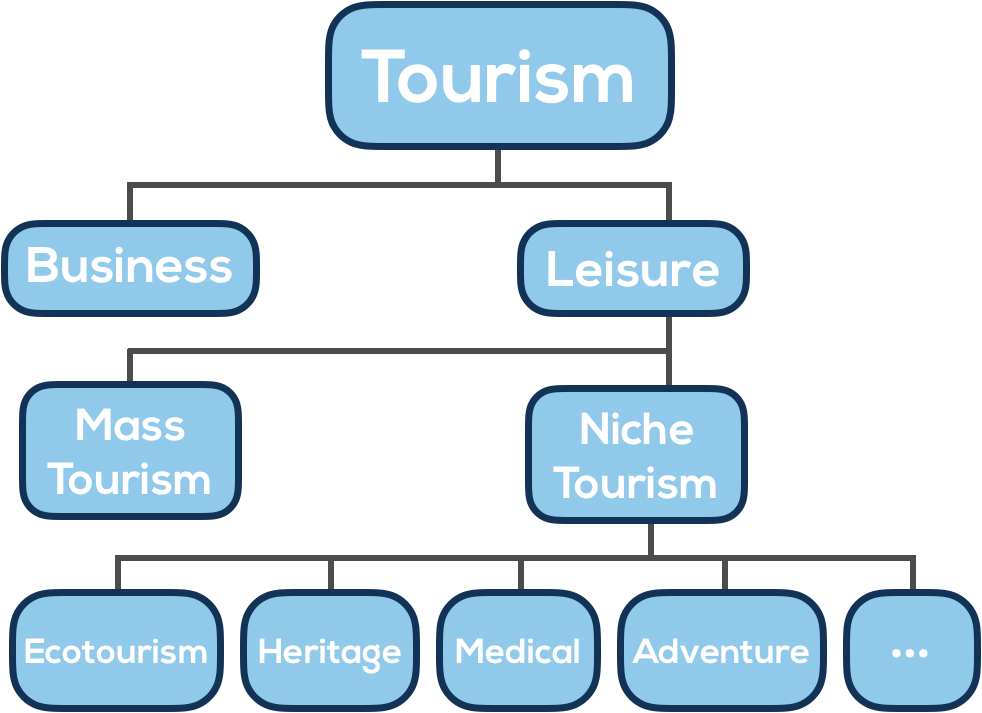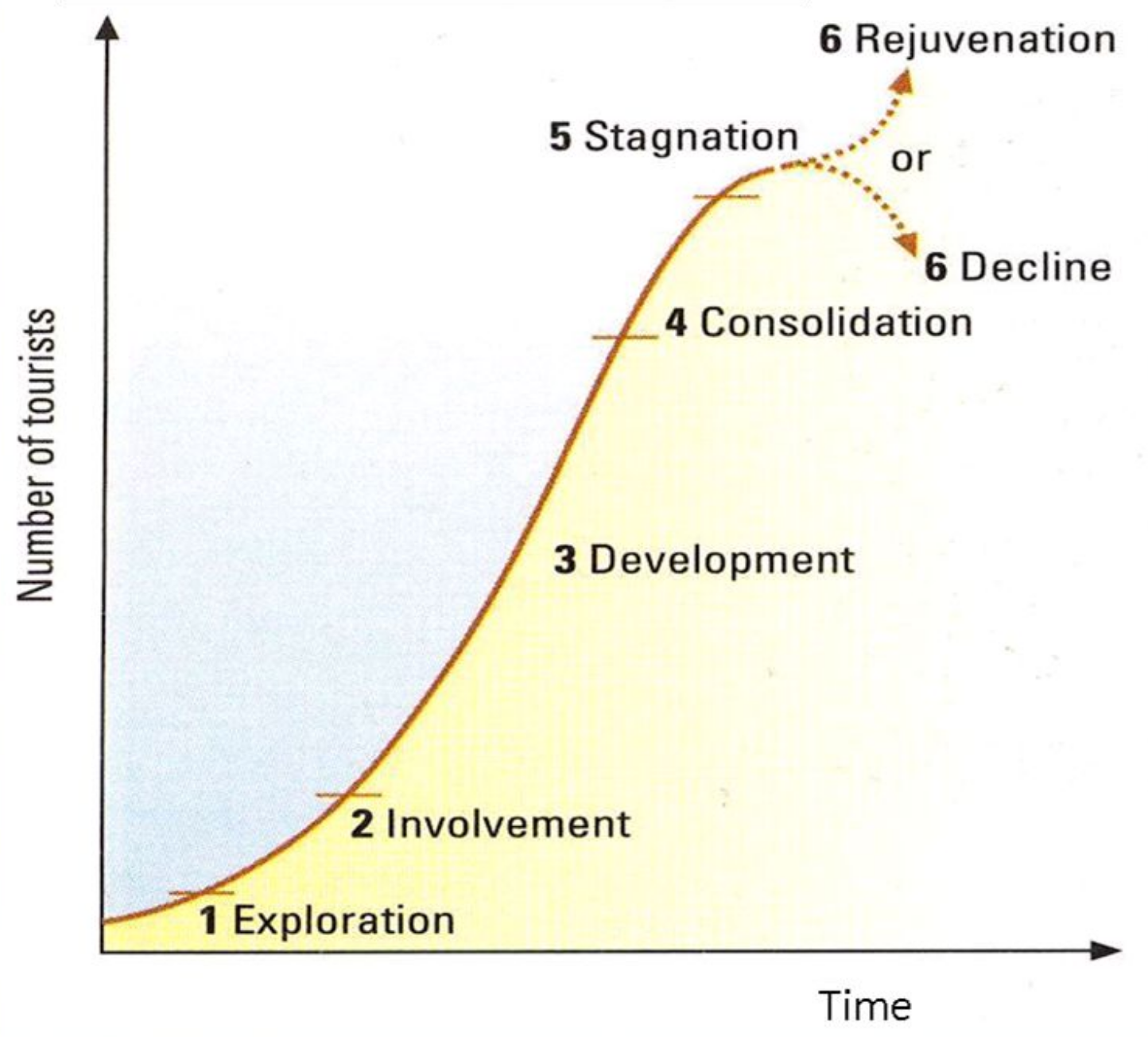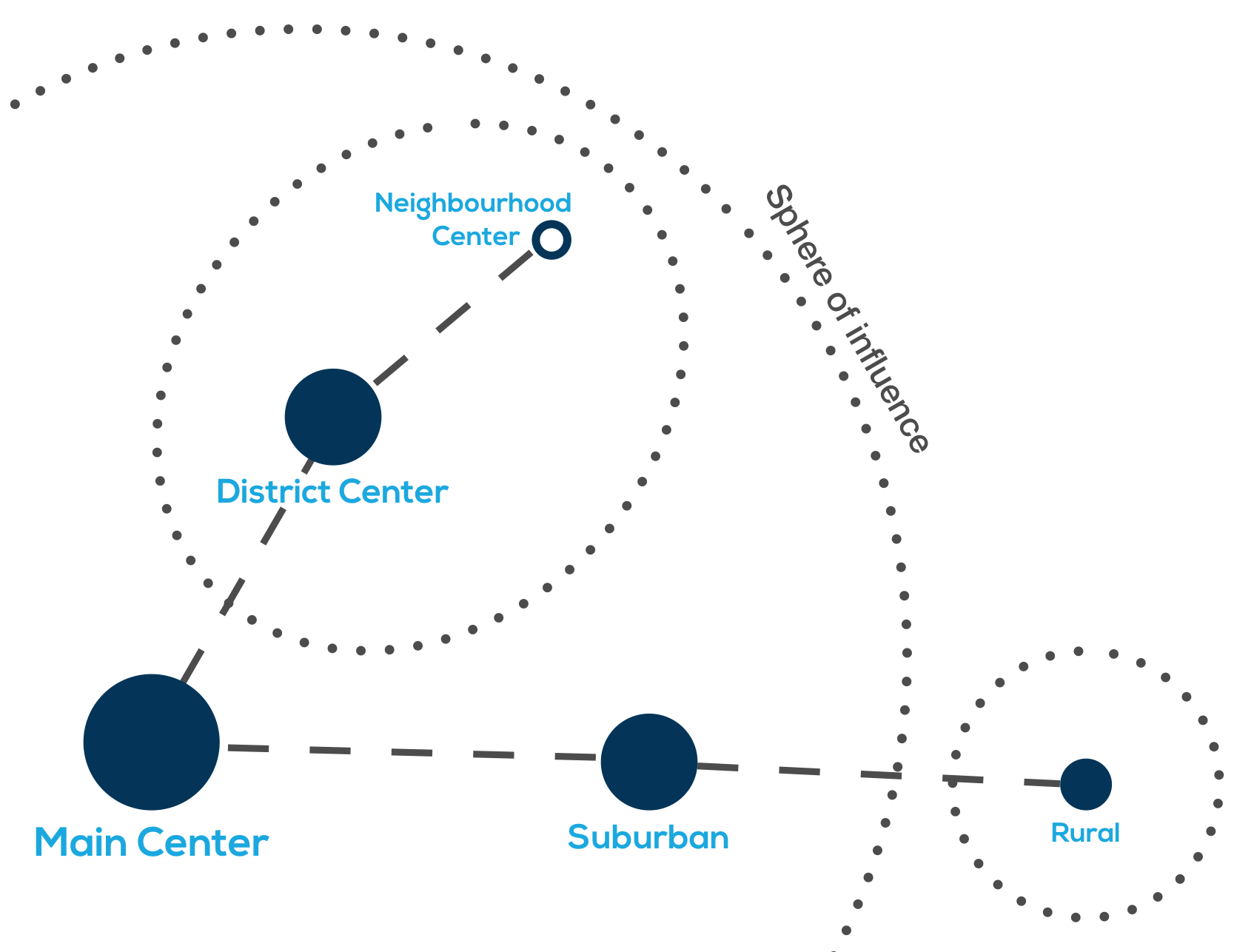Key Words
|
Key word
|
Definition
|
|
Leisure
|
Freely chosen activity in free time includes sports, recreation, and tourism
|
|
Recreation
|
Leisure for enjoyment can be non-professional sports
|
|
Sport
|
Professional physical activity
|
|
Tourism
|
Spending at least one night in a location other than ones home
|
|
Sustainable Tourism
|
Tourism that conserves primary tourism resources and benefits local people
|
|
Global Commons
|
Resources that belong to everyone (oceans). They can be exploited and should be managed carefully
|
|
Niche Tourism
|
The opposite of mass tourism. People that prefer visiting places in/with small numbers (weddings)
|
|
Ecotourism
|
Similar to sustainable tourism, but focusing primarily on the environment
|
|
GMC
|
Global Middle Class
|
|
Disposable Income
|
Total income minus living costs and taxes
|
|
Disease of affluence
|
Diseases that tend to occur in places of wealth, usually in the elderly (heart, cancer)
|
|
Social Media
|
A marketing platform powered by the tourists themselves
|
|
Diaspora
|
Dispersion of a certain population across the world
|
|
Primary tourist resource
|
Resource whose original purpose differed from tourism, such as natural landscapes, religious buildings, defensive sites
|
|
Secondary tourist resource
|
Resource whose purpose is to please tourists, for example hotels, restaurants and theme parks
|
|
Carrying capacity
|
Maximum number of people required to keep a facility viable
|
|
Threshold population
|
Minimum number of people required to keep a facility viable
|
|
CBD
|
Central Business District - is a primary tourist resource
|
Changing Leisure Patterns
Factors affecting personal participation
|
Group
|
Factors
|
|
Social
|
Personality, Gender norms, Ethnicity, ‘National Sort’, Culture factors, Religion, Social structures, sports and recreation groups at a local level
|
|
Environmental (Physical)
|
Place of residence (accessibility) - Climate and Terrain
|
|
Economic
|
Cost of activities and equipment, Personal affluence, Cost of living} Disposable Income
|
|
Political
|
Government policy, Strategy for L.S.T., Funding, in school PE, setting up of leagues
|
|
Demographic
|
Age, Health, Sex, Stage in the family cycle
|
Leisure
Factors and Trends Affecting Growth of Leisure
Very Developed Country point of view
|
Factor or Trend
|
Effect
|
|
Legislations reducing expected working hours
|
Increased free time during the day
|
|
Greater acceptance of a five-day working week, especially for part time staff
|
|
Technological developments making non-leisure activities less time consuming
|
|
Reduction in the length of the working week
|
Increased free time during weekends.
|
|
Increase in wages
|
Increased disposable income, which could go to leisure
|
|
Reduction in costs for basic needs
|
|
Growth Leisure Activity -> Demand vs Supply
|
Effective marketing can serve as motivation
|
|
Increase of flexibility in self-employment
|
Allow for self time management
|
|
Developments in technology
|
Development of cheaper modes of transportation, and therefore is more accessible.
Development of online booking systems
|
|
Globalisation
|
Places become closer together through peace and trade
|
|
Physical and emotional well-being
|
Diseases of Affluence
|
|
Different stages of development
|
Existing infrastructure, more disposable income
|
Societal Variation in Leisure Time
|
Variable
|
Effect
|
|
Gender
|
Women tend to participate less in sporting activities due to societal norms
|
|
Income level
|
Higher levels of income allow for more variety in leisures, which may affect leisure time
|
|
Education level
|
Higher levels on education may raise awareness in the benefits of certain leisures
|
|
Family size
|
Smaller families require less care and therefore more free time, yet larger families need more leisure
|
|
Age categories
|
Different age groups have the ability, interest and time to partake in leisure activities
|
|
Disposable free time
|
Different cultures and societies have different expectations/standards for how much one should work and rest
|
|
Accessibility and awareness of recreational opportunities
|
Some types of developments focus on the building social infrastructure (public areas) such as parks. Marketed third party recreations contribute to the recognition.
|
Tourism
Categories of Tourism

Reasons for the Growth in Tourism
Chicken and egg analogy
|
Demand
|
Supply
|
|
As the GMS grows, more people can afford traveling. Developments in technology (e.g. booking websites, social media) increase the desirability and accessibility of traveling.
|
The majority of countries have developed a lot more tourist facilities. The current international sense of security and developments in technology make traveling safer and more accessible.
|
Tourism at a local and national scale
General trends in placement and features of hotspots
- Areas of outstanding natural beauty
- Historical city centers
- Coastal areas with sandy beaches
- Places with high cultural value
- Save and secure
- Accessible
Growth Factors of Hotspots
|
Factor
|
Reason
|
|
Government policy
|
May encourage the development of a hotspot
|
|
Zoning
|
Setting certain areas for different purposes, some for tourist activities and others for natural preservation
|
|
Gateway/Entry points
|
Some hotspots are not the final destination; gateways are simply passages to the destination
|
|
Advertising
|
Multiple agencies may advertise the same feature/area resulting in it becoming very popular
|
|
Word-of-mouth and social media
|
In some cases the tourism resources are so appealing that they become popular through simply word-of-mouth, no marketing required
|
Seasonal vs Diurnal
| |
Seasonal
|
Diurnal
|
|
Definition
|
Tourist influx over during a particular time of year
|
Tourist influx during particular times on the day
|
|
Example
|
Ski resort (winter)
|
Beach (summer, when not too hot)
|
Cities (when light)
|
Primary and Secondary Tourist Resources
|
Resource
|
In Urban Areas
|
In Rural Areas
|
|
Primary
|
Most commonly found in the CBD (Central Business District I may be referred to as downtown). They are popular amongst tourist due to their historic value and age. Their original purpose was to attend to local’s needs, but now they’ve been adopted as tourist attractions.
|
Usually, it’s the entire natural landscape. Human modification such as agriculture may contribute to the attractive of an area. Castles, stately homes and ancient ruins provide as well.
|
|
Secondary
|
Spaced out, as they are build recently and with tourism in mind. This allows these facilities to cover the whole area with their spheres of influence. In CBDs, they are present in the form of hotels and restaurants. In the outskirts of cities, they may be present in the form of theme parks.
|
Built to manage tourism over large areas of land (foot baths, tourism centers).
Built around a primary resource to manage demands. This includes hotels, restaurants, shops and car parks.
|
Sphere of influence
Butler model
|
Diagram
|
Explanation
|
 |
|
Urban Spacial Pattern
|
Diagram
|
Explanation
|
 |
|
Theoretical Map
|
Diagram
|
Explanation
|
 |
The greater the tourist resource (in this case settlement area), the greater the sphere of influence. These spheres may intersect, be shared between resources or even be inside one another.
|
Editors- admin_andrei - 1012 words.
View count: 7167